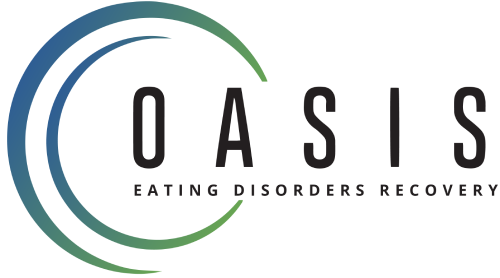Avoidant/Restrictive Food Intake Disorder (ARFID) is one of the most misunderstood eating disorders. Unlike anorexia nervosa or bulimia, ARFID isn’t driven by body image concerns. Instead, it’s defined by a persistent difficulty meeting nutritional needs due to food avoidance, which can lead to weight loss, nutritional deficiencies, and impaired functioning. The DSM-5 recognizes ARFID as a diagnosable feeding disorder, and it often begins in childhood or adolescence.
Some individuals with ARFID avoid certain food groups because of sensory sensitivities—textures, smells, or tastes that feel overwhelming. Others may have a fear of choking, vomiting, or other aversive consequences linked to eating. Still others show a lack of interest in food or mealtimes, leading to poor intake and reduced quality of life.
ARFID can significantly impact growth, mental health, and physical well-being. Adolescents with ARFID may struggle at school, withdraw socially, or rely on nutritional supplements just to meet daily needs. In severe cases, inpatient or residential treatment programs may be required to stabilize weight and address health risks.
Because ARFID is not simply “picky eating,” it requires an evidence-based treatment approach. One of the most effective options is Exposure and Response Prevention (ERP), a therapy adapted from Cognitive Behavioral Therapy (CBT) that helps individuals gradually face food-related fears.
What Is ERP and How Does It Help Treat ARFID?
Exposure and Response Prevention (ERP) is a form of cognitive behavioral therapy originally developed for obsessive-compulsive disorder (OCD) and anxiety disorders. The principle is simple but powerful: individuals are gradually exposed to feared situations—in this case, specific foods, textures, or mealtime challenges—while practicing new coping strategies instead of avoidance.
How ERP Works for ARFID
- Exposure: Clients are introduced to new foods or avoided food groups in a structured, supportive way.
- Response prevention: Instead of relying on avoidance or restrictive eating habits, individuals practice staying present, using coping strategies, and tolerating the discomfort.
- Repetition and progression: Over time, exposures are repeated and expanded, reducing anxiety and avoidance behaviors.
For example, an adolescent afraid of choking may begin by sitting near the food, then progress to smelling, touching, tasting, and eventually eating it. ERP helps rewire the brain’s response to feared foods, building confidence and reducing food avoidance.
ERP vs. Picky Eating
Families sometimes confuse ARFID with ordinary picky eating. The difference lies in severity and impact. Picky eaters may avoid certain foods but still maintain adequate food intake and nutrition. By contrast, ARFID leads to measurable impairment—weight loss, growth delays, nutritional deficiencies, and distress that interferes with daily life.
ERP is not typically necessary for mild picky eating but is crucial in treating ARFID, where structured intervention and professional support are needed.
ERP in Practice: What Patients Experience
At Oasis Eating Recovery, ERP is delivered by trained providers who specialize in the treatment of eating disorders. Each treatment plan is tailored to the individual’s age, medical needs, and unique challenges.
Step 1: Assessment and Planning
Clinicians gather information on the client’s eating patterns, sensory sensitivities, co-occurring disorders (like ADHD, autism, or anxiety disorders), and medical history. Families are involved in this stage, as family-based treatment (FBT) is often part of ARFID care.
Step 2: Psychoeducation
Clients and families learn about ARFID, the role of anxiety, and how ERP works. Understanding the process reduces fear and increases engagement in therapy.
Step 3: Exposures
In ERP sessions, adolescents are guided through small, manageable exposures to specific foods. For example:
- Looking at new foods on a plate
- Smelling or touching the food
- Taking a small bite
- Participating in structured mealtimes with support
Step 4: Response Prevention
Patients are encouraged to avoid maladaptive coping responses—such as avoidance, gagging rituals, or reassurance-seeking—and instead use grounding techniques, relaxation, or CBT-based coping skills.
Step 5: Reevaluation and Progression
Each session builds on the last, with regular reevaluation of progress. Over time, the list of acceptable foods expands, nutritional status improves, and confidence grows.
The Role of CBT-AR in ARFID Treatment
CBT-AR (Cognitive Behavioral Therapy for ARFID) is a specialized form of CBT that integrates ERP principles. Designed for adolescents and young adults, CBT-AR combines exposure therapy with strategies for reducing avoidance, restructuring negative thoughts, and building positive eating behaviors.
CBT-AR has shown promise as an evidence-based treatment in multiple clinical studies, particularly when combined with nutritional counseling and family therapy.
Family Involvement in ERP for ARFID
Parents and caregivers play a vital role in treating ARFID. At Oasis, we integrate family-based treatment (FBT) into ERP to strengthen outcomes. Families learn to:
- Create structured, low-pressure mealtimes
- Support exposures at home between sessions
- Encourage progress without force or criticism
- Recognize signs of relapse or regression
This collaborative approach ensures that ERP strategies extend beyond the therapy room and into everyday life.
ERP and Co-Occurring Disorders
Many adolescents with ARFID also live with mental health conditions such as OCD, anxiety disorders, ADHD, or autism spectrum disorder. These co-occurring issues often intensify food avoidance and require an integrated treatment program.
Our clinicians provide dual diagnosis support, ensuring ERP is delivered alongside interventions for anxiety, ADHD, or mental health disorders. By addressing the whole person—not just the eating behaviors—Oasis promotes sustainable recovery.
ERP as Part of Comprehensive ARFID Treatment
ERP is powerful, but it is most effective when part of a comprehensive treatment approach that includes:
- CBT and CBT-AR for cognitive restructuring
- Family-based treatment (FBT) for parent and sibling support
- Nutritional counseling to restore health and prevent nutritional deficiencies
- Group therapy and support groups to reduce isolation
- Psychiatry for co-occurring mental disorders or medication management
This integrated model provides adolescents and their families with the tools needed for long-term recovery and improved quality of life.
Take the Next Step Toward Recovery
At Oasis Eating Recovery in Fresno, California, we believe that healing from ARFID is possible with the right care. Our ERP-based treatment approach, combined with CBT-AR, family involvement, and nutritional guidance, empowers adolescents to overcome fear, expand their diets, and restore health.
If your loved one is struggling with avoidant/restrictive food intake disorder, call us today to learn more about our evidence-based treatment programs. Together, we can create a treatment plan that restores hope, health, and balance.
Levels of Care at Oasis Eating Recovery
We offer a continuum of care to meet each adolescent’s needs:
- Outpatient treatment: Weekly ERP and therapy sessions for mild to moderate cases.
- Intensive Outpatient Program (IOP): Structured after-school therapy and ERP sessions.
- Partial Hospitalization Program (PHP): Day treatment combining ERP, CBT, and family therapy.
Each treatment option includes support from a registered dietitian, mental health providers, and family therapists to ensure nutrition, mental health, and coping skills are addressed simultaneously.

